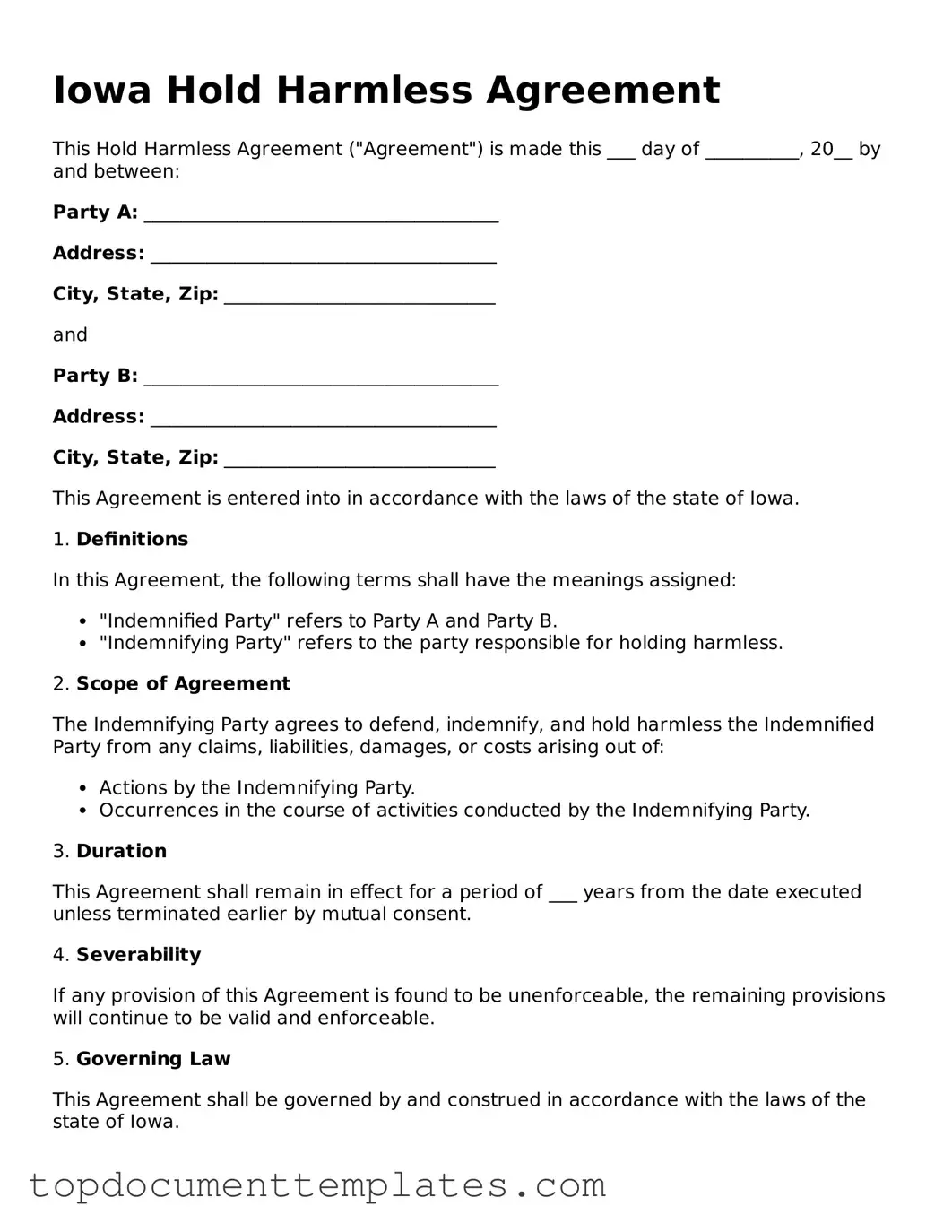Valid Hold Harmless Agreement Form for Iowa State
The Iowa Hold Harmless Agreement is a legal document designed to protect one party from liability for any damages or injuries that may occur during a specific activity or event. This agreement is often used in various contexts, such as rental agreements or events, to ensure that one party does not hold the other responsible for unforeseen incidents. To ensure your interests are protected, consider filling out the form by clicking the button below.
Open This Form
